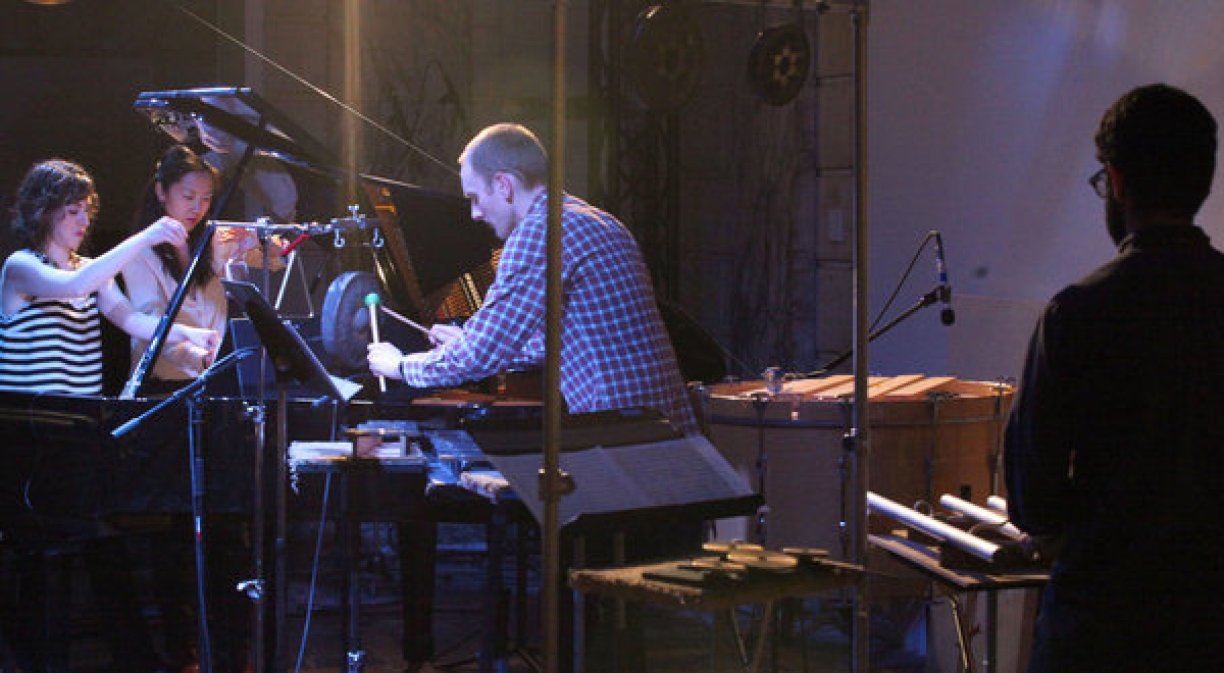"Bell Tones Are Ringing in Percussion and Piano Program: Yarn/Wire Plays Percussion and Piano at Issue Project Room"
by Steve Smith in The New York Times
March 25, 2012
The composer George Crumb, in program notes for a classic 1975 recording of his “Music for a Summer Evening (Makrokosmos III),” cited as a primary influence Bartok’s groundbreaking Sonata for Two Pianos and Percussion. “It is curious that other composers did not subsequently contribute to the genre,” he wrote. Not so curious, perhaps, if you consider the labor entailed in transporting and arranging the disparate, bulky equipment involved.
But where there is inspiration, perspiration often follows. Yarn/Wire, a quartet formed at Stony Brook University in 2005, has specialized in the limited canon for two pianists and two percussionists, expanding the repertory with a steady stream of commissions. On Thursday evening, the group — Laura Barger and Ning Yu (who joined in September), pianists; and Ian Antonio and Russell Greenberg, percussionists — inaugurated a residency at the Issue Project Room in downtown Brooklyn, meant to serve as an incubator for fresh material.
The two composers featured on this program showed Yarn/Wire’s refreshingly broad taste in associates. Nathan Davis, a percussionist in the International Contemporary Ensemble, writes music that deals deftly and poetically with timbre and sonority. Pete Swanson is best known for his work in the bracingly noisy duo Yellow Swans, now defunct; a flood of recent solo recordings has included cassettes of muzzy, obstreperous rock and a vivid 2011 LP of corroded techno, “Man With Potential.”
Mr. Davis’s “de clocher à clocher” (“from steeple to steeple”), a phrase from Rimbaud, teemed with bell tones. Mr. Davis’s refined ear was instantly evident in the work’s chaste opening bars: soft glockenspiel tones ringing over gingerly scraped crotales (antique cymbals); gentle chords played at a piano’s high end; and lower piano strings bowed with a thin filament, with screws jangling among them.
Metal pipes rapped with soft mallets rang like church bells and pinged like flagpoles; microphones waved to and fro made the sounds wobble and pulse. Gongs — two hidden offstage and two suspended from the ceiling — murmured and roared, saturating the resonant room. Mr. Davis shepherded balances from a console behind the audience.
Where he provided an exacting score, Mr. Swanson, for his “Eliminated Artist.” recorded Yarn/Wire improvising during rehearsals, then arranged a sequence of gestures and patterns for the quartet to reproduce. During the performance, stationed amid the audience at a table littered with tape decks and electronic effects, Mr. Swanson injected distorted rehearsal fragments and other sounds, and swirled the mix throughout the space with loudspeakers.
Since Mr. Davis’s piece emphasized metallic sounds, here Mr. Antonio and Mr. Greenberg focused on wood and skin. Tranquil passages evoked frogs and insects peeping at twilight; at the work’s roiling peak, battered wooden planks were monkeys howling in a monsoon. True to the title, conventional instrumental roles were eliminated; Mr. Antonio and Mr. Greenberg tapped chromatic melodies on Rototoms (tunable drums), and plucked elegiac final notes on chords stretched across bass drums.
"Bell Tones Are Ringing in Percussion and Piano Program: Yarn/Wire Plays Percussion and Piano at Issue Project Room"
by Steve Smith in The New York Times
March 25, 2012

